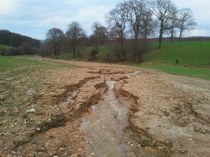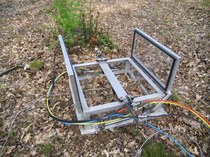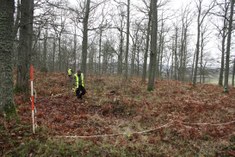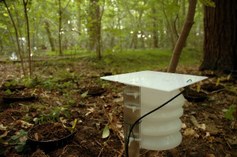Impact of global changes
An ever-increasing mixture of anthropogenic stresses is acting on ecosystems worldwide. The most important threats for the biodiversity and functioning of temperate forests are land-use change, fragmentation, elevated atmospheric deposition, and climate change. ForNaLab studies the effects of these global changes on the trees, herb layer, and belowground soil biota of temperate forests across the globe. The research results help policymakers and forest managers in developing urgently needed strategies to adapt to global change.
The lab manages a large database of forest herb layer resurvey plots (forestREplot) and coordinates a European research network on forest plant species in a changing environment (FLEUR) and on the effects of forest fragmentation on the delivery of ecosystem services (smallFOREST).
PASTFORWARD is a large research project focusing on herb layers in temperate forests and how their composition changes over time in response to global change.
FORMICA is a large research project that aims to quantify and understand the role of microclimatic buffering in modulating forest plant responses to macroclimate warming.
Current projects
- Development trajectories in below-above-ground plant communities driven by nutrient availability and soil biota (more info)
- Effects of N input, climate warming and management changes on the herb layer (more info)
- Effects of plant-soil feedbacks on colonization rates of forest herbs along a latitudinal gradient (more info)
- FORMICA: Microclimatic buffering of plant responses to macroclimate warming in temperate forests (more info)
- N cycling and sequestration in temperate forest edges (more info)
- PASTFORWARD: Development trajectories of temperate forest plant communities under global change: combining hindsight and forecasting (more info)
- Quantifying understorey responses to overstorey opening to better predict tree regeneration success (more info)
- The importance of microclimate for the prediction of forest plant responses to global warming (more info)
- Climate change and plant responses in ecological corridors of agricultural landscapes along a latitudinal gradient (more info)
-
Modelling climate change impacts on the composition and functioning of temperate forest understorey vegetation (more info)
-
Phenology responses to climate change in the understorey of temperate forests - Implications for biodiversity and ecosystem functioning (more info)
-
Climate change in cities: impact of the urban heat island on urban forests (more info)
Finished projects
- Acidification and eutrophication of forests on sandy soil: effects of forest type and deposition load (more info)
- Biomonitoring of air quality by using leaf characteristics of trees (more info)
- Comparison of ecosystem functioning and biogeochemical cycles in temperate forests in southern Chile and Flanders (1999 – 2002) (more info)
- Defining guidelines for climate adaptation in the management of nature reserves in Flanders (more info)
- Ecohydrological monitoring in managed and unmanaged forest ecosystems in southern Chile (2006-2007) (more info)
- Effect of fire damage on regeneration and N loss from Araucaria araucana forests in southern Chile (2004 – 2005) (more info)
- Effects of climate change on Acer regeneration from seeds (more info)
- Forest edge effect on atmospheric deposition, nitrate leaching and soil acidification in forests on sandy soils (more info)
- Forest plant dynamics along a latitudinal gradient (more info)
- Mechanistic modeling of aqueous nitrogen uptake by tree canopies (more info)
- Monitoring of the above and below ground C sequestration potential of Belgian forests and short rotation coppice on former agricultural land (more info)
- Nitrogen retention in contrasting temperate forest ecosystems in a region of high nitrogen (more info)
- Present and future population dynamics of black cherry (Prunus serotina Ehrh.) in forests in its introduced range deposition (more info)
- Reading ancient woodlands in the Campine region of Antwerp (northern Belgium). An exercise in historical ecology (more info)
- Refinement of a canopy budget model by analysing nutrient transfer processes in tree canopies at different spatio-temporal scales (more info)
- Risk assessment of agricultural intensification on N deposition on pristine forests and plantations in southern Chile (2001-2004) (more info)
- Seed ecology of common juniper (Juniperus communis) (more info)
- Spatial variability of throughfall water under beech (more info)
- The importance of landscape fragmentation and climate change to forest herb species in Northern Europe (FLEUR) (more info)
- FORBIOClimate: adaptation potential of biodiverse forests in the face of climate change (more info)
- Effects of temperature during seed development on progeny performance (more info)



